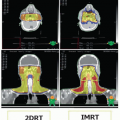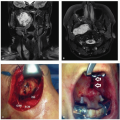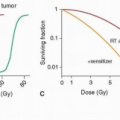Quality of Life in Head and Neck Cancer
Allen C. Sherman
Stephanie Simonton-Atchley
INTRODUCTION
Cancer of the head and neck (HNC) and its treatments are associated with considerable burdens. Traditional clinical endpoints such as tumor control and survival provide little indication of the marked changes that patients experience in their day-to-day lives. Efforts to understand these challenges have become a more central concern. Thus, over the past few decades, health-related quality of life (QOL) has been recognized as a salient endpoint in clinical trials. Information about QOL outcomes is also important in clinical care. This information helps to inform patients and their families about what to expect during the course of care and facilitates decision making among treatment options. QOL data also assist clinicians in identifying common problems that must be monitored over time and inform the development of more effective screening and intervention services.
QOL research in HNC has grown dramatically over the past 20 years.1,2 This chapter reviews some of the recent work in this area. We summarize some of the major difficulties that confront HNC patients at different phases of treatment and recovery. We review some of the important clinical and personal factors that may influence QOL outcomes. We examine interventions developed to enhance QOL among HNC patients. We discuss methods to assess QOL, and finally, we consider future directions for this field.
SYNOPSIS OF QOL CHANGES
HNC confronts patients with multiple challenges. Common concerns include disconcerting changes in functional capacity, disruption in daily roles, and uncertainty about the future. Patients may struggle with increased dependency on others and a diminished sense of control over their lives. The difficulties that patients experience are colored in part by the particularities of tumor site, treatment modality, and phase in the trajectory of illness.3 During the initial period of active treatment, for example, patients must manage an array of acute toxicities.4,5 Notwithstanding advances in treatment, symptom burden has become more pronounced with the move toward more aggressive, multimodal treatment approaches for individuals with advanced disease. The sequelae of illness and treatment may affect basic aspects of day-to-day functioning, including speaking, eating, respiration, and sometimes facial appearance—areas that play a fundamental role in social interaction and personal identity.
As patients transition from active treatment to long-term survivorship, other challenges may become more prominent.3 These may include difficulty reestablishing normal routines,6 fear of recurrence,7 and sexual or social concerns.8 Patients may need to adapt to a range of persistent or late effects (e.g., fatigue, xerostomia, dysphagia, dental complications, etc.).4,9,10 Some are discouraged by ongoing limitations with eating or communicating. Others may struggle with recovery from nicotine or alcohol dependence, which have elevated prevalence rates in this population.11 Finally, individuals who develop recurrence or disease progression are confronted by a new set of demands, as they cope with more pressing existential issues, intensified symptom burden, and complex end-of-life care decisions.
Aside from the impact on the patient, HNC creates major complications for the family as well.12 Family members must accommodate multiple medical appointments and complicated caregiver tasks. Typical roles and responsibilities must be rebalanced. The burden on family caregivers has been further intensified by cost-driven changes within the health care system, including trends toward shorter hospital stays and increased home care. Traditionally neglected in both research and clinical care, family members recently have begun to receive greater attention. Studies suggest that partners often experience levels of distress that are comparable to13 or greater than that of the patient.14,15 Poorer communication between the spouses (e.g., less self-disclosure, greater efforts to hide from the partner one’s concerns about the illness) has been tied to greater levels of distress.16
QOL CHANGES DURING INITIAL TREATMENT AND RECOVERY
Patients in the initial phase of diagnosis and treatment may experience adverse changes in multiple domains. Longitudinal studies usually depict a characteristic deterioration in physical, role, and social spheres of functioning over the first few months; these changes unfold along with a series of more specific head and neck (HN) symptoms, including problems with swallowing, social eating, speech, HNC pain, xerostomia, sticky saliva, altered sensation, and nutritional deficits.10,17,18,19,20,21,22 As expected, the most pronounced level of deterioration occurs in the acute treatment interval, followed by a gradual improvement (for survivors) over the course of the first year. By that point, many symptoms have returned to baseline (i.e., pretreatment) levels. Notably, however, clinically meaningful deficits remain in many areas. Protracted problems often include xerostomia, dysphagia, eating difficulties, speech problems, sticky saliva, fatigue, and diminished physical functioning.10,17,18,19,20,21,22 Observers often highlight the encouraging improvements in global or general QOL, but these gains should not eclipse attention to residual concerns.
Aside from the adverse changes in physical functioning that emerge during active treatment, patients may experience difficulties in psychosocial well-being as well. Many report clinically meaningful levels of emotional distress. Prevalence estimates have varied widely across studies, due in part to methodological considerations (e.g., differences in measures, cutoff scores, and times of assessment). More rigorous studies have used diagnostic interviews instead of self-report questionnaires to evaluate psychosocial morbidity. Rates of major depression have ranged from 17% to 29% among patients assessed during the first year after diagnosis23,24,25; these estimates are notably higher than rates for the general US population. By way of comparison, these estimates are also somewhat higher than those derived from a recent meta-analytic review involving patients with diverse types of cancer and varying times of assessment.26 These findings assume additional urgency because depressive symptoms have been associated with increased risk for malnutrition and poor adherence among HNC patients27,28 and with increased hospitalizations, poorer health behaviors, and diminished immune function in other patient groups.29,30,31 Aside from depression, patients may experience other psychological difficulties as well (e.g., posttraumatic stress symptoms, adjustment disorder, etc.). Unfortunately, psychosocial morbidity is notably underdetected and undertreated in oncology settings.32,33,34
QOL CHANGES DURING LONG-TERM SURVIVORSHIP
Growing attention has focused on the experience of HNC survivors evaluated over the longer term, 3 to 5 years after diagnosis.1 What challenges emerge during posttreatment survivorship? In contrast to the notable shifts in QOL that characterize the acute treatment period, subsequent changes over time are more limited. Several longitudinal studies17,35,36,37 suggest stable or modestly improved global QOL, along with protracted problems in specific areas, including, for example, disrupted physical and role functioning, diminished taste and smell, xerostomia, sticky saliva, and dental concerns. At 3 to 5 years, these difficulties remained more burdensome than they had been at diagnosis. However, other areas seemed to improve compared to their pretreatment levels, such as emotional functioning and depressive symptoms.17,36,37
Other studies have compared the experience of HNC survivors to that of healthy comparison groups, 3 years or more after treatment. As one might expect, HNC patients (with diverse anatomical sites and treatment histories) report greater problems with HN symptoms (e.g., trismus, xerostomia, diminished taste and smell) relative to age-matched population norms.35,38 However, findings regarding broader aspects of QOL (e.g., disrupted physical functioning, mental health, and vitality) have varied across studies, with some showing extensive deficits39,40 and others more narrow differences,38,41,42 compared with healthy individuals. Overall, it appears that many long-term survivors manage well but experience persisting effects in specific domains. Helping individuals adapt during the phase of survivorship is becoming a stronger priority for oncology teams.
CLINICAL CHARACTERISTICS ASSOCIATED WITH QOL
QOL outcomes are influenced by basic characteristics of the illness and treatment, though these findings are not as consistent as one might anticipate. In view of the limited number of randomized studies, it is often difficult to disentangle the effects of one clinical characteristic from another (e.g., disease stage vs. treatment modality). Generally however, patients with advanced disease tend to fare more poorly than do those with less disseminated disease,17,19,24,43,44,45,46,47 though this is not always the case.20,22 Individuals undergoing more aggressive, multimodal treatment usually have greater difficulties than do those who receive single-modality treatment,17,48,49 and similarly, those who receive more extensive surgical5,50,51 or radiotherapy46 interventions experience greater problems than do patients treated with more limited protocols.
QOL is also shaped by the specific treatment regimens that patients receive. An important objective is to determine whether advances in therapeutic approaches are associated with meaningful improvements in daily physical and psychosocial functioning. Some of this work has focused on innovations in radiotherapy strategies. Intensity-modulated radiotherapy (IMRT), which is designed to target the tumor bed while more effectively limiting the exposure of surrounding radiosensitive tissue, has been widely adopted. Several nonrandomized studies suggest that IMRT is associated with enhanced QOL outcomes relative to conventional radiotherapy52,53,54,55 (for a review, see Tribius and Bergelt56). For example, in a matched-pair comparison study (average follow-up of 23 months), patients treated with IMRT fared better with respect to physical functioning and several HN morbidities (e.g., xerostomia, sticky saliva, trismus, pain, swallowing), compared with those who had received conventional radiotherapy.52 However, QOL benefits have been less pronounced in the few randomized studies conducted thus far. These investigations have confirmed improvements in objective endpoints such as salivary flow and clinician-rated xerostomia, but noted less consistent differences in patient-reported outcomes.57,58,59 Few of these investigations have had adequate statistical power to detect QOL differences; thus, more definitive conclusions await further research.
Other investigations have examined QOL changes associated with advances in surgery. Some of these efforts have evaluated changes in reconstructive techniques. For example, with innovations in microvascular surgery, the use of free flaps has become more prominent than the use of pedicled pectoralis major myocutaneous flaps, which had been a mainstay in reconstruction for patients with cancer of the oral cavity. Free flaps require more extended time in the operating room and more specialized skills, but there are fewer complications, briefer hospitalizations, and lower costs.60,61 Some studies have pointed to long-term improvements in QOL, such as less pain and enhanced appearance, speech, and emotional functioning among oral cancer survivors (assessed on average more than 3 years after surgery) who underwent reconstruction with free flaps, relative to those who received pectoralis major pedicled flap reconstruction.62,63 Recently, there also have been efforts to compare different approaches to free flap reconstruction. There are preliminary indications that anterolateral thigh perforator flaps are associated with more favorable QOL outcomes, including better appearance, improved social functioning, and fewer shoulder problems, compared with radial forearm free flaps (at an average of 3 years after surgery).64 However, caution is required in interpreting each of these studies, because none involved randomized designs and none accounted for imbalances in clinical or demographic characteristics between the reconstruction groups.
Another approach with important QOL implications involves endoscopic surgery. Endoscopic procedures, which are usually performed with a CO2 laser, have become more common as an alternative to open surgery or radiotherapy, especially for early-stage glottic cancer. Thus far, studies have found few differences in QOL outcomes for endoscopic surgery compared with radiotherapy in this patient group65,66,67 (see Spielmann et al.68 for a review). Findings are tentative however because these were small nonrandomized investigations, which evaluated mostly long-term survivors, who may no longer experience the same sequelae that were evident earlier in care; moreover, most of the studies were characterized by clinical or demographic differences between treatment arms. Endoscopic approaches are also used to treat selected patients with more advanced disease.69 A recent nonrandomized study70 focused on patients with hypopharyngeal cancer, assessed closer in time to the end of treatment (average of 10 months). Those who received transoral laser surgery demonstrated significantly better outcomes compared with the open surgery group (e.g., improved emotional and social functioning, speech, social eating, social contact, sensation, dentition), as well as better outcomes than the chemoradiation group (e.g., fewer problems with dry mouth, social eating, social contact). Results should be interpreted conservatively in view of group differences in tumor stage and time since end of treatment. We anticipate that QOL research regarding endoscopic surgery and transoral robotic surgery will continue to expand over the next few years.
Another area that has garnered continued interest and debate involves comparisons across different treatment modalities. Considerable attention has been devoted to organ preservation protocols, such as chemoradiation, as an alternative to extensive resection, in the hope that symptom burden and QOL can be improved without compromising locoregional control or survival. Most of these efforts have focused on patients with locally advanced HNC, including advanced oropharyngeal or laryngeal cancer. Findings are inconsistent. They are also difficult to interpret in the absence of randomized trials. Nonetheless, it is clear that the chemoradiation has difficult toxicities of its own (consistent with the oft-cited observation that organ preservation is not synonymous with organ function). In general, findings suggest that each treatment modality is associated with characteristic symptoms and functional limitations (some of which are distinct and some of which overlap with those of other treatments), so selection among therapeutic options remains a complex process for many patients with advanced disease.
For example, among advanced oropharyngeal cancer survivors (assessed an average of 4.7 years after the end of treatment), the group who had been treated with concurrent chemoradiotherapy reported significantly greater difficulties with a number of symptoms, including trismus, dental concerns, xerostomia, and sticky saliva, than did those who had received surgery and postoperative radiotherapy.9 On the other hand, the surgery group had more problems in other areas (i.e., fatigue, pain, swallowing, social eating, and social contact). Similarly, at 1-year follow-up, Oates et al.43 reported relatively greater deterioration for the chemoradiation group in some domains (e.g., trismus, dentition, swallowing, sexuality, feeling ill), but more pronounced deterioration for the surgery and postoperative radiation group in other domains (e.g., cognitive functioning, fatigue, pain, diminished sensation). In a very small subgroup analysis of survivors of advanced cancer of the oropharynx, findings hinted at clinically meaningful benefits for the radiotherapy group, compared with the surgery and postoperative radiotherapy group, in several areas (e.g., physical, social, role, and emotional functioning, pain, dyspnea).71 However, interpretations are limited by considerable imbalances between the groups in time since treatment. In contrast, another subgroup analysis of advanced oropharyngeal cancer survivors (average follow-up of 3.7 years) tentatively suggested clinically meaningful advantages for the surgery group (e.g., global, social, and cognitive functioning, nausea, reliance on analgesics), though once again the sample was very small.72 Other investigations of intermediate- to long-term survivors of advanced cancer of the oropharynx reported few group differences.40,73 Ultimately, of course, more definitive information about differential effects on QOL will require large, multicenter randomized trials.
Stay updated, free articles. Join our Telegram channel

Full access? Get Clinical Tree








